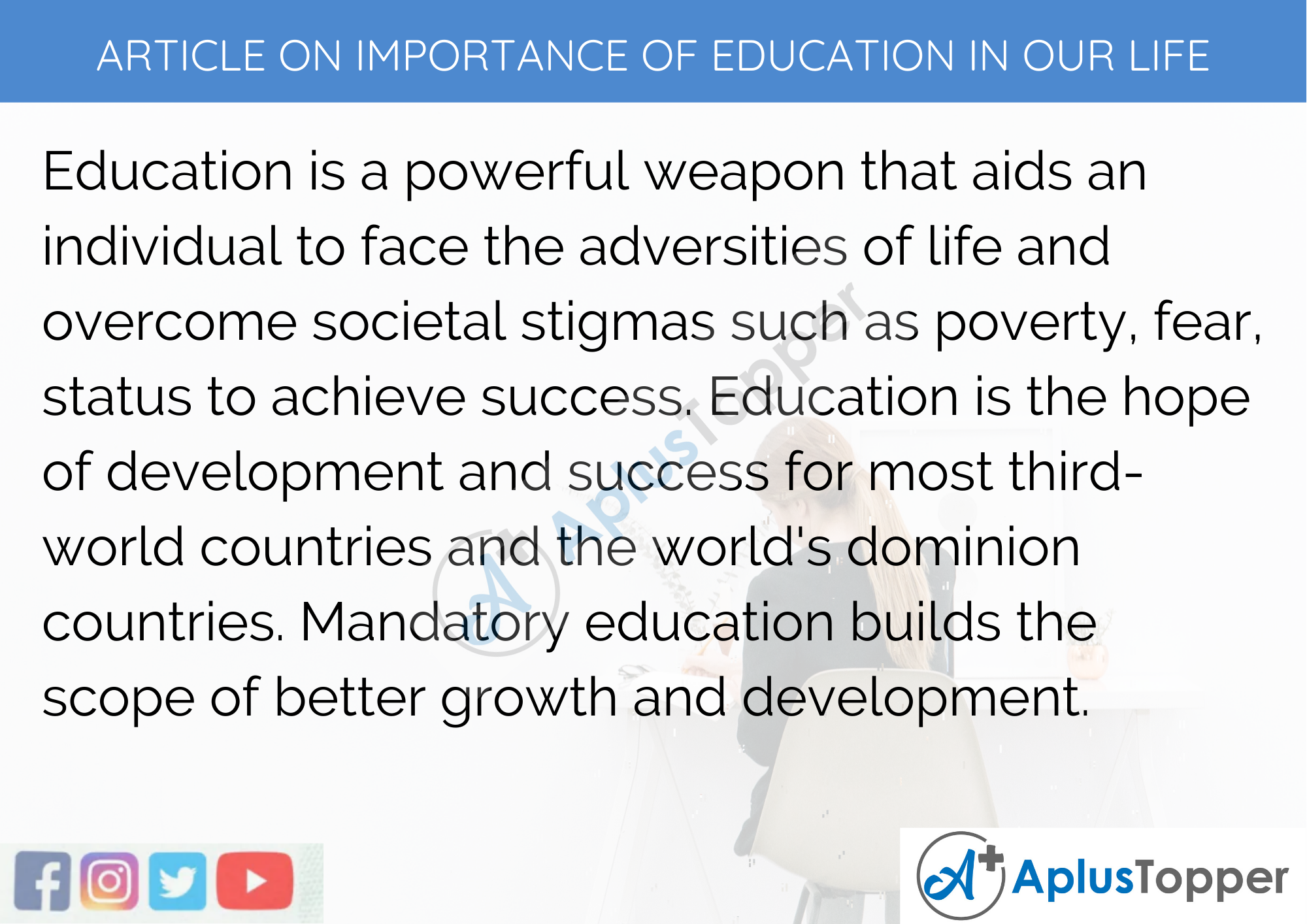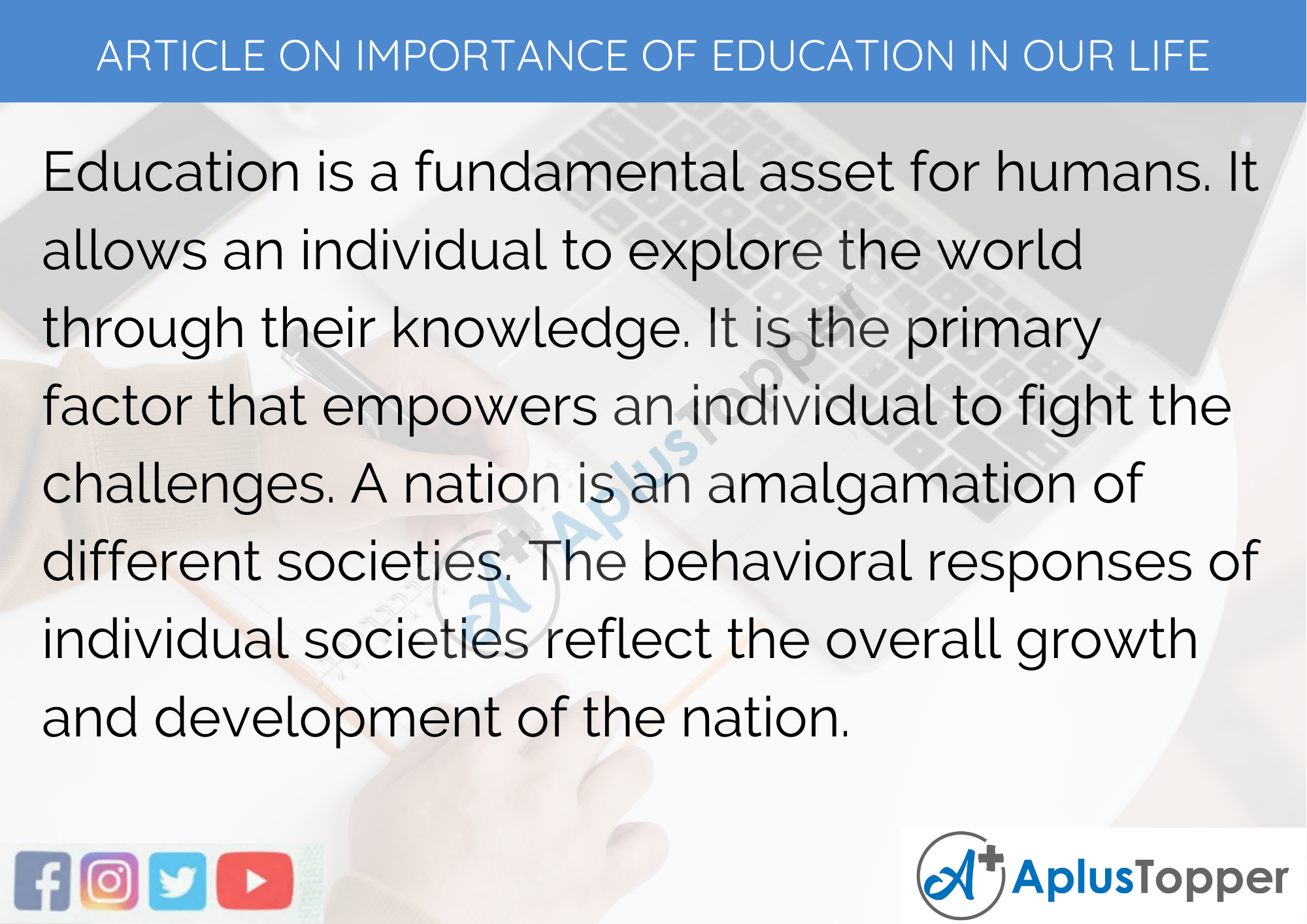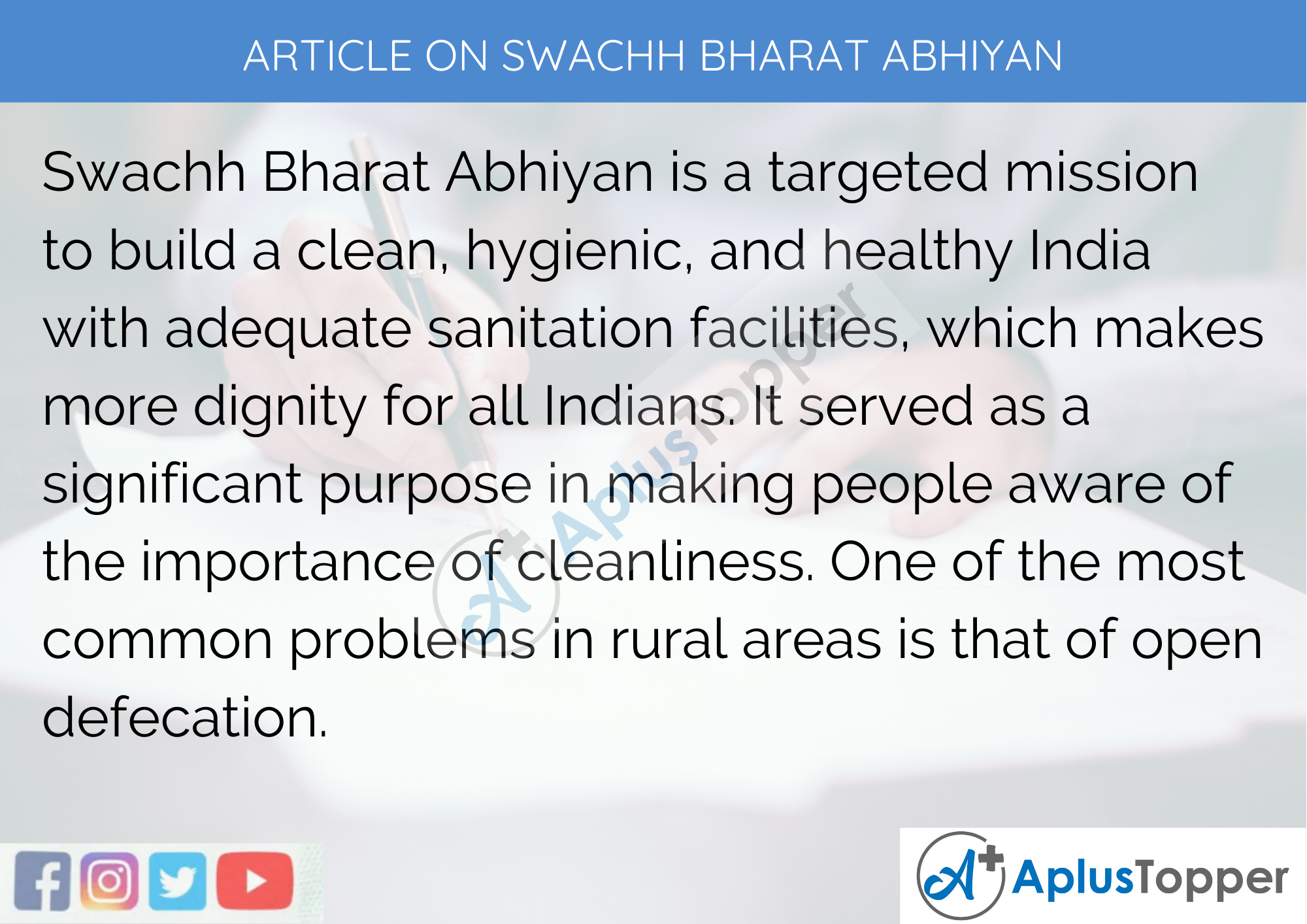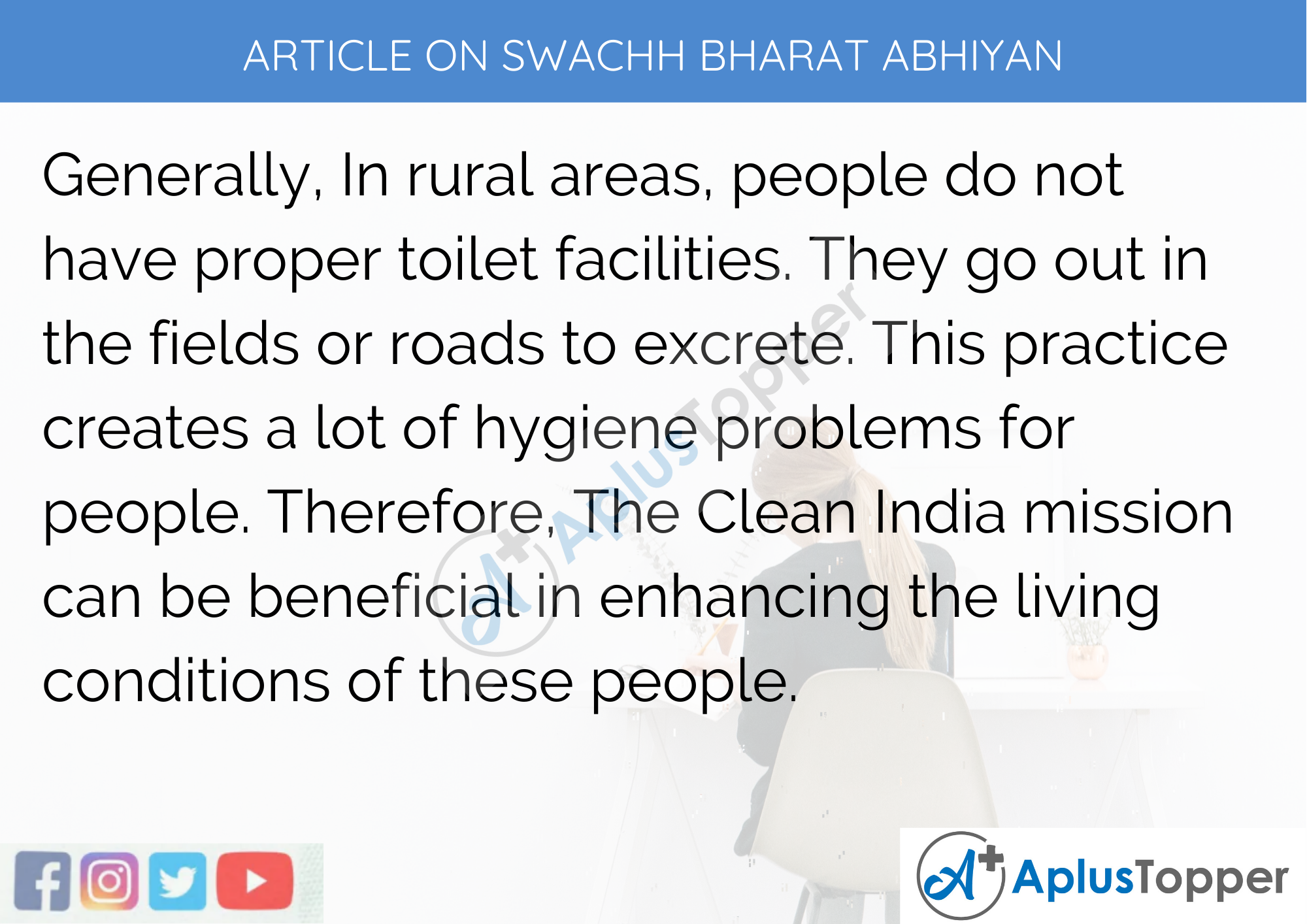Article on Importance of Education for Children: From the words of Jawaharlal Nehru, children are like buds in the garden that need to be carefully nurtured, as they are the future citizens of tomorrow. Education acts as the wind beneath the wings for children to grow as healthy and prosperous adults in the future.
Education plays a pivotal role in a child’s life as it helps them to think and analyze critically, enhance their imagination and thought processes. This platform exposes them to new ideas and helps them achieve success through their dream careers.
A child plays a vital role as they unfold the door to the success of a nation, and education plays a significant role to unlock the success of a child. A nation achieves its growth and success only when a child succeeds.
You can read more Article Writing about people, sports, technology many more.
Long and Short Articles on Importance of Education for Children in English
We have provided two types of articles on the Importance of Education for Children- a 500 words Long article and a 200 words Short Article. The Long Article on the Importance of Education for Children consists of 400-500 words. The Long Article provides a framework that helps students with their competitive exams, assignments, article writing, debate, etc. The short essay on the Importance of Education for Children is written for 200 words and is suitable for children and kids with their classwork.

Long Article on Importance of Education for Children 500 Words in English
Given below is a Long Article on Importance of Education for Children is helpful to the students of classes 6,7,8,9, and 10. The Importance of Education for Children article helps the students with their class assignments, comprehension tasks, article writing, debate, and even competitive examinations.
Education is highly essential in a child’s life and lays the foundation of his/her adulthood success later in life. It acts as a tool that decides whether the individual was contented or happy as an adult or turns out as a depressed and emotionally devastated individual.
Did you know that nearly 70 Million children across the world lack the opportunity to visit the school? Nearly 32 Million children residing in African countries alone lack the opportunity to visit the school.
India has imposed the Right To Education Act 2009, to make Education mandatory for children between the age of 6 to 14 years and thus leading India to grow as one of the fastest-growing economies in the world.
For nations to reach the United Nation’s ‘Goals of Sustainable Development By 2030’, they must implement and spend more money on child education.
Reasons behind the Importance of Education for Children
‘The Importance of Education for Children’ is an establishment made by many countries around the world to provide Education for children belonging to the age group of 5 years to 16 years of age. Below are the reasons behind the importance of education for children and its benefit to the nation.
Builds Team Work and Discipline
Education builds the spirit of teamwork and creates a sense of discipline in children, which helps in their growth as well as the growth and development of the nation in their future. Education acquired during childhood teaches and moulds a child in their communication and helps them to work as a team.
An educated child understands the benefit of teamwork and reflects the conduct throughout their life. They learn the rewards and the perks of disciplined life and the pathway to achieving success and aspirations.
Provides Strenght and Endurance
Education plays a pivotal role in shaping and developing the emotional and mental strength of a child, preparing him/her to face any obstacles that block their path of success.
Education under the guidance of parents and teachers will help children become more tough and secure in life, and provide them with enough strength to fight back at the challenges.
Boosts Economic Growth of a Nation
Children are the forebears of the nation’s economy, and a country cannot achieve economic growth when its children lack the right to education. A nation needs educated children to create professionals, scientists, and entrepreneurs of tomorrow to contribute to the nation’s economy.
Indian will achieve its set economic growth unless every child in the country has access to school and Education.
Boosts confidence
Education is a continuous process of learning that instils confidence among the children. A child’s exposure to the school environment develops many abilities and confidence happens to one of them. They explore new things, analyze in their perspective and reach the state of asking doubts.
They also experience and learn various extra-curricular activities such as drawing, art class, painting, dancing, etc. These activities instil confidence in children and aid them to become ready for the future.
Short Article on Importance of Education for Children 200 Words in English
The 200 words short Article on Importance of Education for Children is helpful for students of classes 1,2,3,4,5 and 6. The article is written to guide the children with their school works-assignments and comprehension exercises.
Education is an essential factor for children as they are the future of the world, and they need the knowledge to stay updated on the current affairs in society. Education plays the role of a vital tool for the development of the nation.
Education is the key to success
The overall development of a child depends on the Education he/she is provided. Childhood forms the foundation of essential qualities such as curiosity, inquisitiveness, learning ability, along with social, moral, and emotional development.
Education is a key that imparts good qualities in a child and aids his growth as a happy, healthy and qualified individual. Education helps in the contribution of the growth and development of the nation as well as achieve individual success.
An underdeveloped country reflects the poor state of child education and the damage of its economy. To build a positive world, every country needs educated children as they are the powerful weapons that build a nation.
Education breaks the barriers and all forms of prevailing social evils like poverty, racism, castism, etc. and paves the way to values, morality, creativity, and innovations. Education is vital for every child as it aids them to stand out as future leaders and lead to the growth and development of the nation.
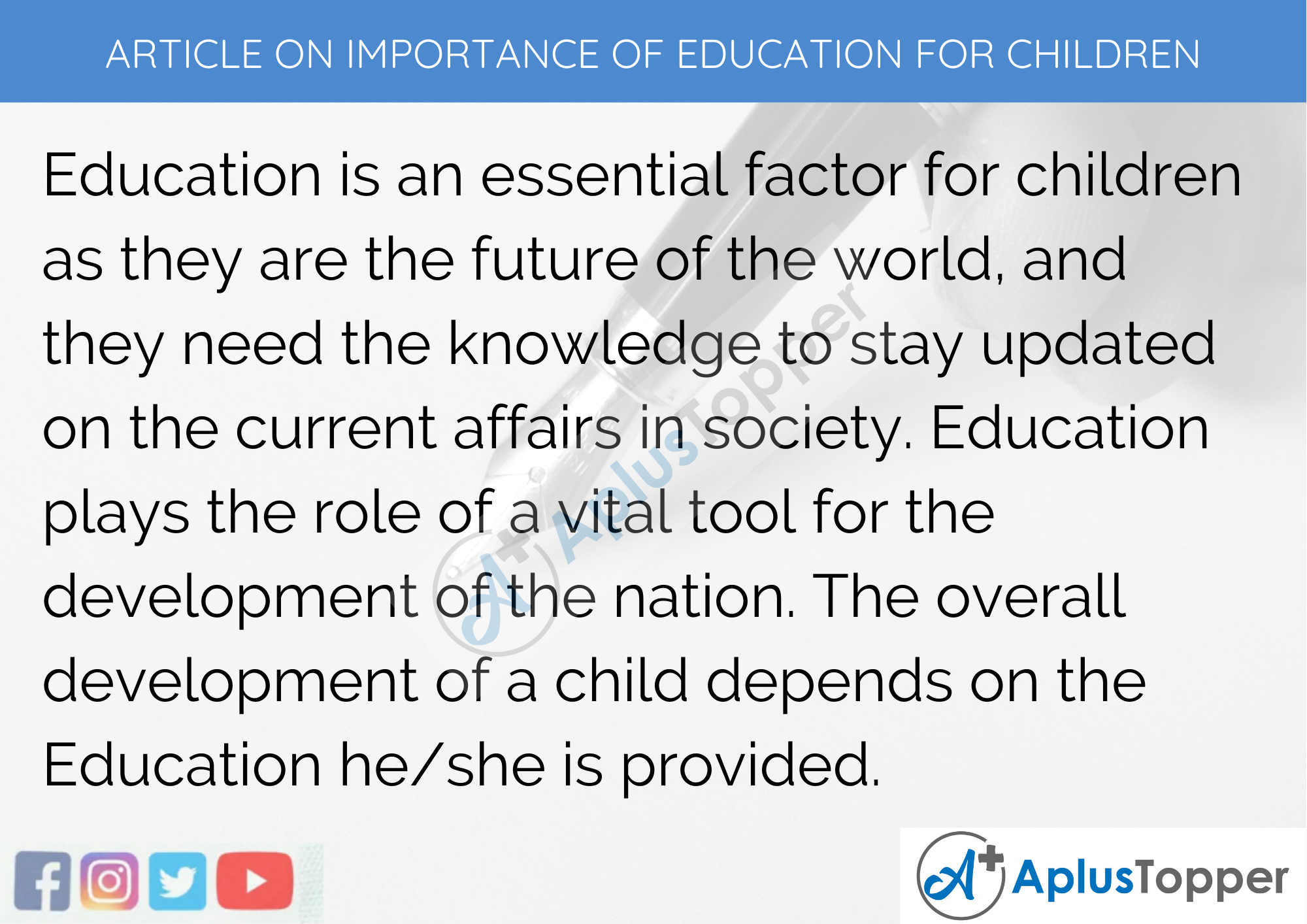
10 Lines on Article About Importance of Education for Children
- Education exposes children to new ideas and helps them to make a path to a career.
- The goal of children education is to develops skills, the spirit of competition and enhances personality development.
- Education decides a child behaviour, how he/she faces obstacles and challenges, aspirations, introspections, and learnings to achieve success.
- Education establishes the feeling of pride and self-esteem in young minds.
- Education is an ongoing process of learning which improves the concentration level of a child.
- Education is necessary for children as they carry social values to their adulthood to strengthen the nation’s social fabric
- Education also builds the overall personality of a child and makes him/her aware of their surroundings.
- Education for children eradicates social practices like child labour and also boosts a nation’s economy and growth.
- India has imposed the Right To Education Act 2009, to make Education mandatory for children between the age of 6 to 14 years.
- A nation’s goals of achieving Global Sustainable Development by 2030 reaches possibility only when a nation highlights the importance of educating every last child in the country.
FAQ’s on Article on Importance of Education for Children
Question 1.
Why does Education play a significant role for children?
Answer:
Education is a vital component in a child’s life as it enhances their skills, personality, and attitude in life.
Question 2.
How does the Education of children boost economic growth?
Answer:
Children are the forebears of the nation’s economy, and a country cannot achieve economic growth when its children lack the right to education. A nation needs educated children to create professionals, scientists, and entrepreneurs of tomorrow to contribute to the nation’s economy.
Question 3.
Which Act was implemented by the Indian government to make Education compulsory among children?
Answer:
India has enforced the Law to make Education mandatory for children between the age of 6 to 14 years through the implementation of Right To Education Act 2009, leading India to grow as one of the fastest-growing economies in the world.


